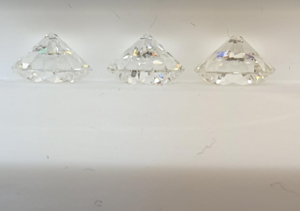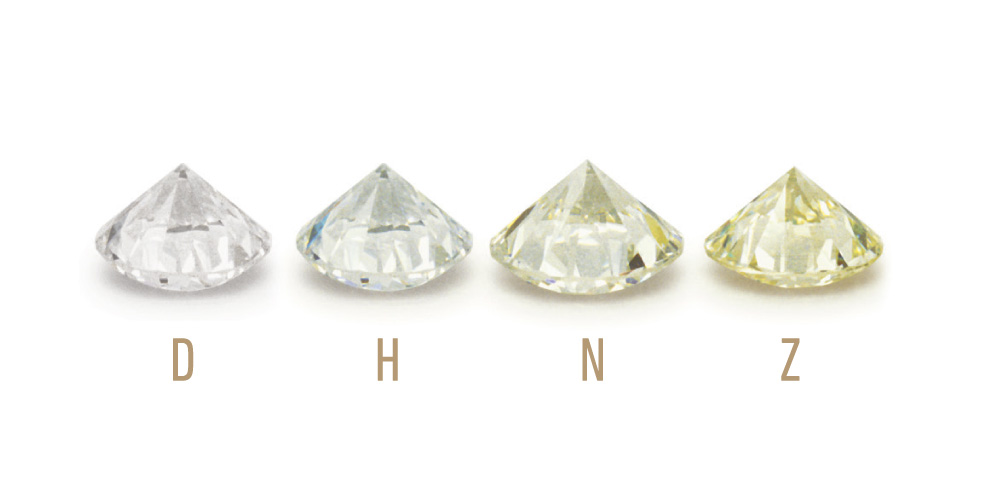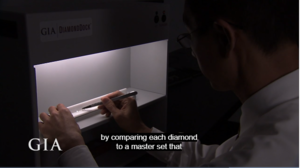- Joined
- Apr 25, 2014
- Messages
- 8,225
I'm pretty colour-sensitive in real life and have correctly sorted a D, E and F in a retail shop environment before
I'm pretty colour-sensitive in real life and have correctly sorted a D, E and F in a retail shop environment before(pre-PS!) but I swear that all these stones in the picture look identical...

I am more interested in hearing what you are seeing in person when taking them.I agree. I can see a little more than you can in the photo (latest samsung with macro lens).
Every time I try to take a grading lamp photo I get yellow bands across the field of view - so I will need to get out the real camera.
Face up - Sitting at my desk with the blinds closed and only the overhead single fluor light (replaced with LED tube) i cant see any face up colour - just dark sparkly diamonds.I am more interested in hearing what you are seeing in person when taking them.
It looks G in the grading light, but I can not get a photo because the mercury vapour strobing and the phone always captures a yellow band. See how the right side is all tinted yellow V007.With all that you've described, Gary, I have to wonder how it was given a grade of G to begin with.

It is really impossible to pick one lighting that is representative of the real world.My concern, then, is the relevance of the "grading light" to real world lighting situations.
It is really impossible to pick one lighting that is representative of the real world.
At any given moment any diamond someone is wearing will be "seeing" multiple light sources not one.
It's my belief, the only reason to not do this is to protect the value and grading already in place.



@sledge,This was my point earlier @Venzen007.
What we seem to know about fluor is that it behaves as it wishes based on the intensity of fluor and intensity of the UV it's exposed to.
If stones with no fluor are being graded amongst stones with fluor, you need to remove the UV element so the lab is able to report color as accurately as possible regardless of fluor levels.
Then if a stone is graded D, E or G we know that's the true color. If it improves because of the fluor and right/specific conditions, then great, that's a bonus. But allowing UV to potentially provide a false grade of any magnitude is a mistake IMO.
It's my belief, the only reason to not do this is to protect the value and grading already in place.
Cowing will not defend or even discuss his "work"- continuing to dredge it up seems to be truly detrimental to those who actually want to learn.
Making statements which you know to be false in order to cast doubt on an opposing viewpoint is NOT how education takes place. That is how gaslighting takes place.IN a public discussion, questions will be raised. That is how education takes place.
That is how gaslighting takes place.
Guys- you're trying to fit a round peg into a square hole here.
GIA is forced to make compromises to issue color grades- one way or the other. There will never be a set "answer" to this debate.
There's never going to be "science" that changes the basic facts- @Karl_K stated it well.
A diamond changes color based on its surroundings, as well as the intensity and nature of the lighting source(s).
Diamonds of any color will do this.
Some fluorescent diamonds exhibit exaggerated changes based on lighting.
Nothing we say or do is going to change that.


Some fluorescent diamonds behave in a manner that makes them near impossible to color grade.
Clearly you're free to tell your clients whatever you want.
IN a public discussion, questions will be raised. That is how education takes place.
4. I have raised several issues about Cowing's articles as in the past year or two I have learned a lot more information and identified flaws in that work. Mainly he did not really account for the changes in GIA's grading lighting, he used the wrong measuring Solarmeter, and did not properly account for violet and near violet effects which are common radiations all around us and have a much stronger effect than the previously considered much shorter wave length UV lights.
Happy to discuss any one of the above 4 points until we get some consensus.
Or any other individual fact or variant.
Firstly Sledge, there are research programmes under way. More advanced than you can know.@Garry H (Cut Nut) would it be possible for you and some of the vendors such as WF, CBI and others to put together a new study concerning fluor?
For me I see two main issues:
1. The effects during color grading in a controlled lab.
2. The effects after grading in the real world.
It seems like addressing item #1 would be fairly simple and not too terribly expensive. Better yet, is this a study that vendors want to give involved in doing as I'm sure there could be some negative blow back as well.
At least it sounds simple. Use the correct meter you've mentioned. Take readings using various bulbs under various conditions (7" away, 10" away, 12" away, filters, etc).
@Garry H (Cut Nut) would it be possible for you and some of the vendors such as WF, CBI and others to put together a new study concerning fluor?
For me I see two main issues:
1. The effects during color grading in a controlled lab.
2. The effects after grading in the real world.
It seems like addressing item #1 would be fairly simple and not too terribly expensive. Better yet, is this a study that vendors want to give involved in doing as I'm sure there could be some negative blow back as well.
At least it sounds simple. Use the correct meter you've mentioned. Take readings using various bulbs under various conditions (7" away, 10" away, 12" away, filters, etc).
